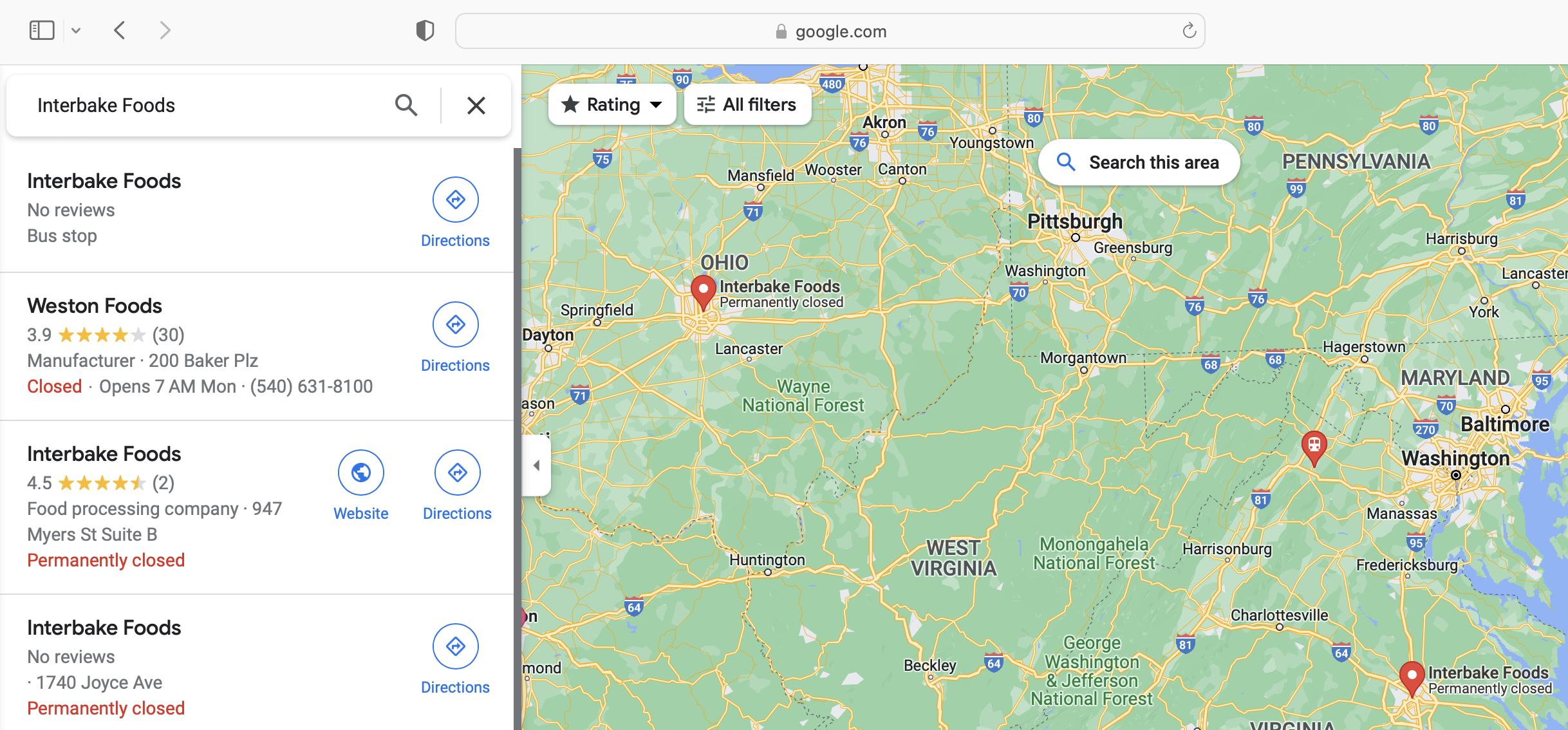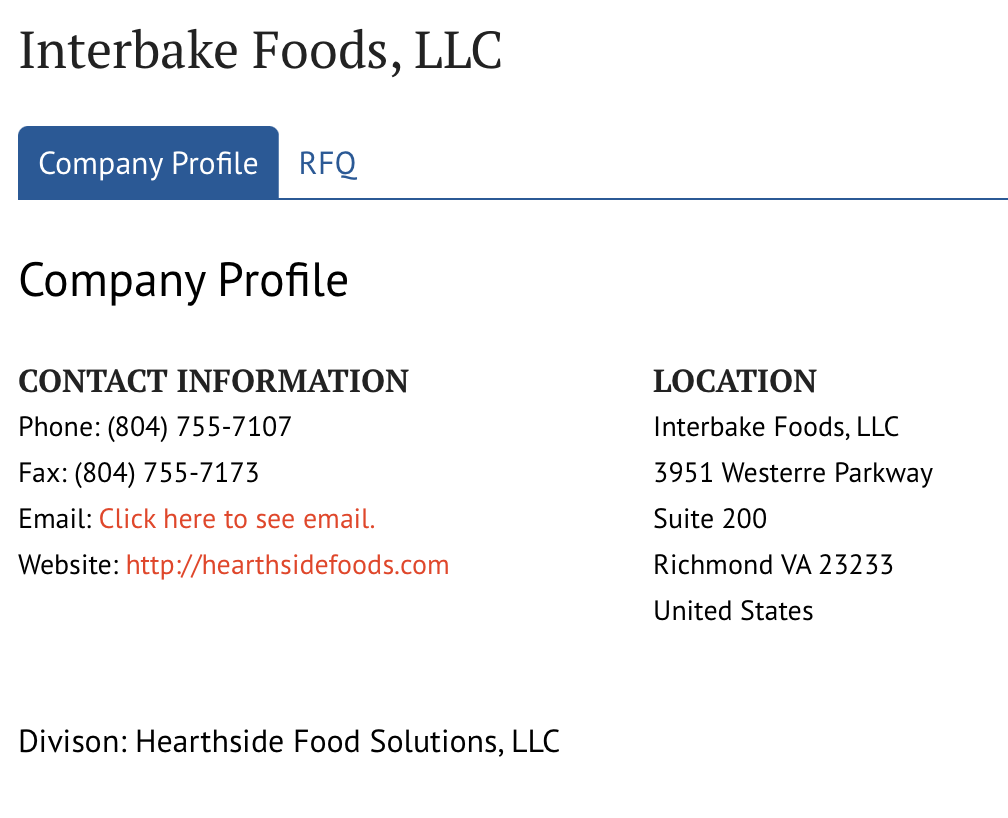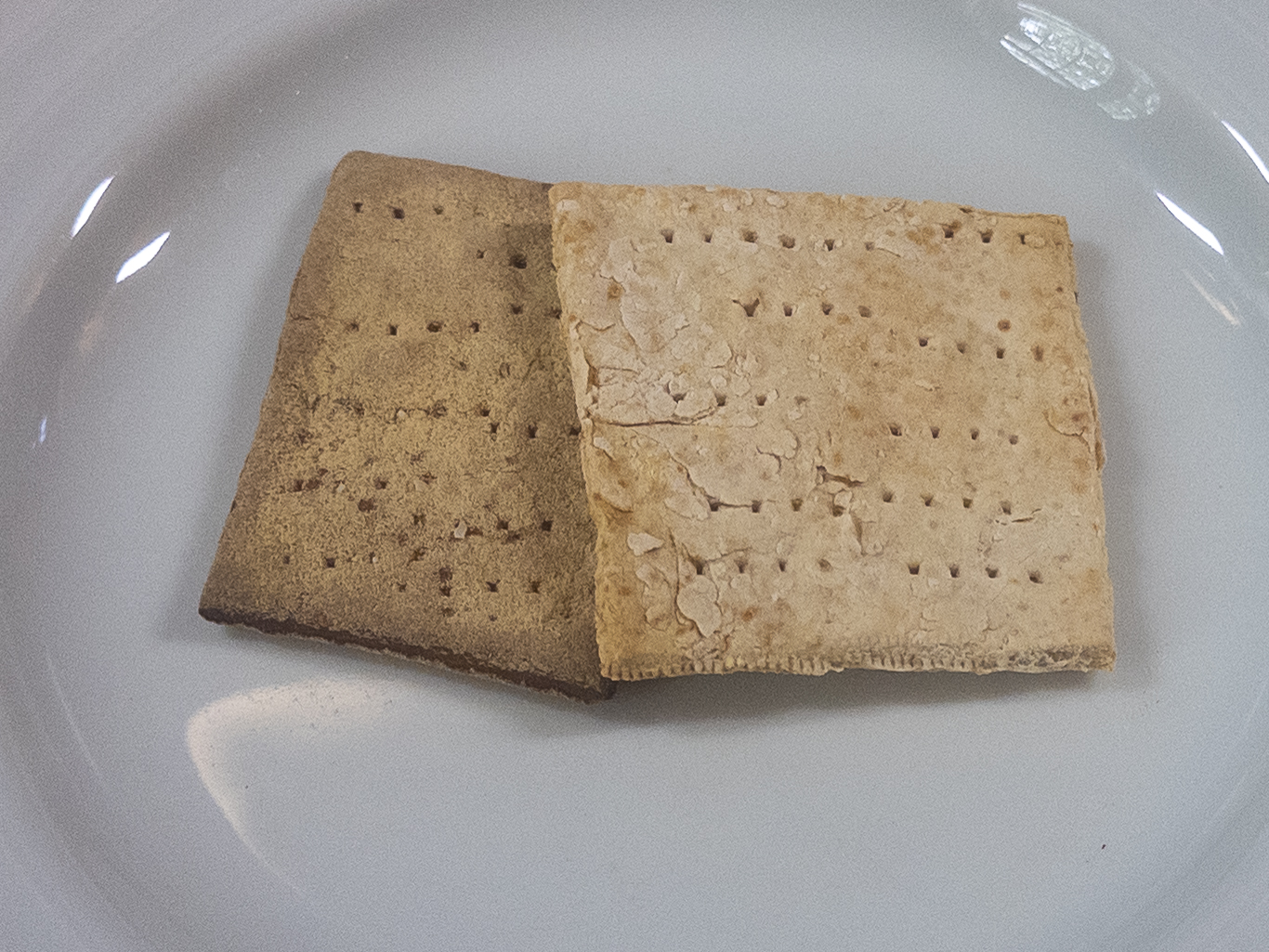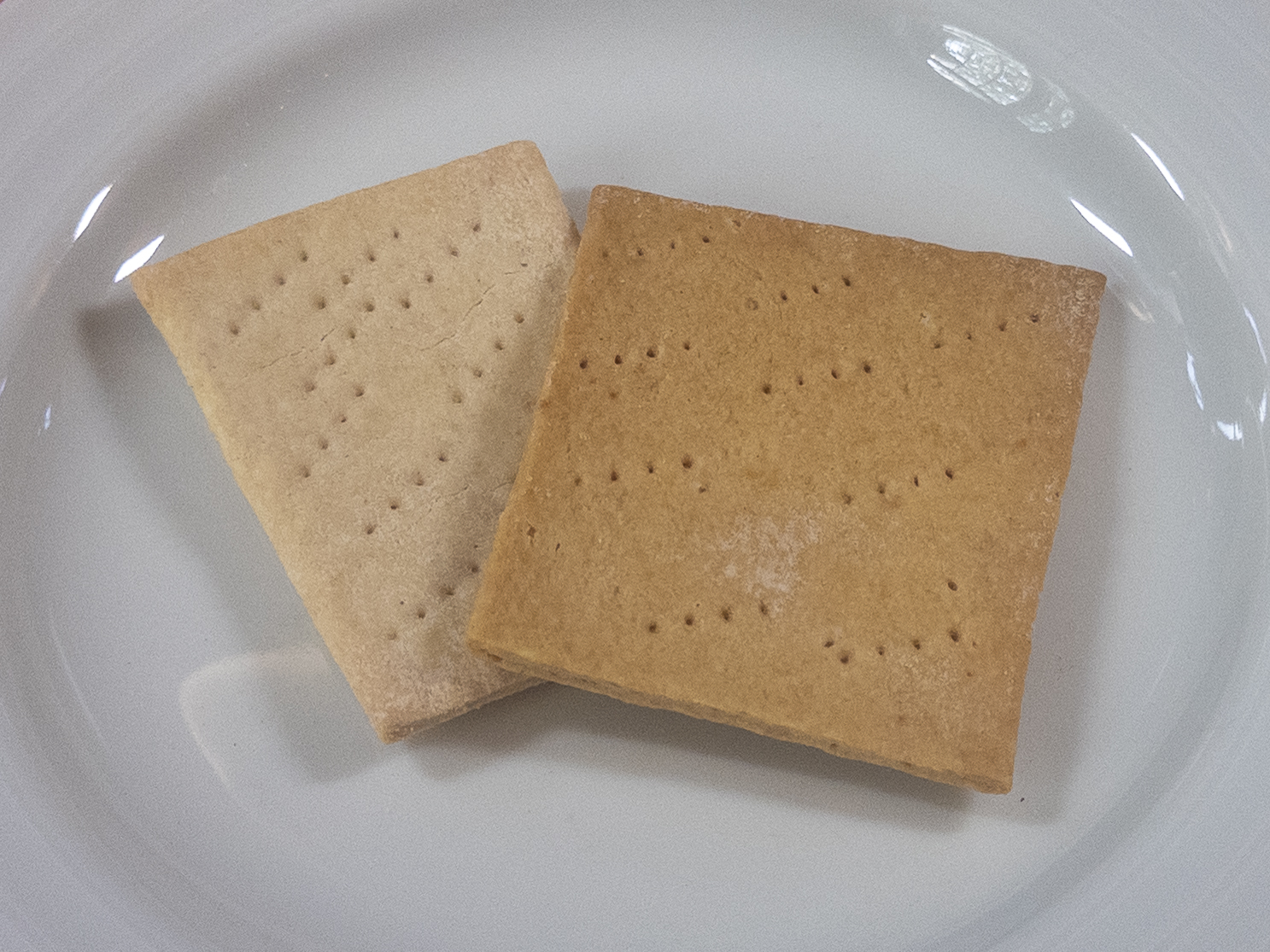Between reading Aubrey/Maturin novels and watching Townsends videos on Youtube, I’ve developed a bit meme-lust for hard tack.
Hard tack is flour and water and salt formed into cracker or cookie shapes and baked and dried until it is basically rock-hard, and is a very durable food source used as far back as humanity has had flour, water, salt, and fire.
Why the allure? We all want food to be handy, but food so often requires a bit of care – it has to be kept from heat and cold and moisture or dryness and from being crushed. The idea of a perpetually edible, super durable, cheap to make cookie to carry while traveling or hiking camping or whatever is attractive. The vision of pulling out a small sack, fishing out a “ship’s biscuit” and having a quick snack is comforting. More so if said biscuit is made with whole, nutritious ingredients, which gives the thing that strong combination of being healthy and traditional. What could be better?
Well, based on my first experiments making this stuff, anything would be better. Hard tack is so hard it is not edible. It ain’t no cookie. I wasn’t surprised as most historical accounts I’ve seen have people using hard tack not so much a food by itself but as an ingredient in stews, soups, puddings, etc. It has to be crushed and/or soaked in liquid to be chewable.
But surely there is something nearly as hard but more edible, right? I mean, in the hundreds of years since hard tack was commonly used surely someone has developed something with most of the durability of hard tack but with a bit less fired-ceramic nature?
Enter Pilot Bread
While I was surfing around reading about hard tack recipes and looking for variations I learned about Sailor Boy Pilot Bread. Apparently this is a form of hard tack that is consumed in great quantities all over the state of Alaska, where regular bread is hard to come by. There are sites with recipes using it to make pizza, and apparently it is a delivery system for every kind of dip or spread. This is clearly more edible than actual hard tack.

Reputed to be durable, very shelf stable, and well-liked I thought I should get some and try them out. Easy thought, hard to get done. Sailor Boy Pilot Bread is hard to come by outside of Alaska. Amazon lists it, but says it is no longer available.
The company that makes Sailor Boy Pilot Bread that is listed on the package, Interbake Foods, is apparently defunct. Or maybe has become Weston foods, but their phone number is disconnected as well.

Maybe they are actually Hearthside Food Solutions (from Baking Business)

That number was dead as well, but I’ve emailed with no reply yet. And no mention anywhere of the Sailor Boy brand. Very mysterious.
Then I received this photo from a friend in Alaska:

So Weston it is! Or at least was in 2021.
While I wait for a reply from corporate America, I decided to try making my own pilot bread. I started with the recipe here: Grandpa Cooks
Attempts #1 & 2
I had doubts because the ingredients list was flour, water, salt, and baking powder – was the addition of baking powder really going to make a big difference? No it did not. Failure. Complete failure. So hard, even in a 1/8” thickness, that I was worried I’d break a tooth. Pistachio shells would be comparable, probably softer. Grandpa may cook, but not well. Or, possibly, Sailor Boy Pilot Bread is one hell of a lot harder than I’m thinking it is. No, can’t be, people eat pilot bread with salmon spread on it. It’s got to be softer.
Looking at the ingredients list for Sailor Boy Pilot Bread, available a lot of places like on Food n flavors, we see palm oil as the second ingredient. I don’t have palm oil, but I do have coconut oil, and that is a tropical oil and has pretty good shelf stability.
Attempt #3
Adding a substantial amount of coconut oil was a game changer. This result was still very hard and crisp, but chewable without risk of damaging anything. Just a smidge harder than most anything else. Bland, but that is kind of the point. I suspect this recipe is not too far off from actual Pilot Bread, except for being ugly. This recipe would serve but it might be nicer to get more leavening. And flavor, and fiber.
Attempt #4
Involved doubling the amount of baking powder with no discernible difference.
Attempt #5
Part of my plan was to incorporate whole wheat flour to add flavor and fiber, so I added 50% whole wheat flour, and upped the water the make the dough a bit softer. Attempt #5 yielded a slightly softer cracker yet with more texture and flavor, and very close to what I originally had in mind. I also started making them round rather than square, but I’m trying to decide if that is really worth the trouble. This result lacks the refinement of store-bought crackers, being a little ugly and not perfectly round and consistent, but the flavor is pretty comparable to crackers I’ve had in the past. Easily edible alone or with other things.

I’ve still got ideas for improvement, but this recipe is very promising:
75g (50% total flour weight) Unbleached bread flour
75g (50% total flour weight) Whole wheat flour
98g (65% total flour weight) Water
30g (20% total flour weight) Coconut oil
4g (2% total flour weight) Sugar
4g (2% total flour weight) Salt
4g (2% total flour weight) Baking powder
Mix everything together, knead, roll to 1/8-1/4″ or so, cut into squares/circles, poke some holes like you see in crackers, bake at 350F 20min a side. Feel free to bake longer, I’m still working out the ideal time. Thicker crackers definitely take longer.
Many folks such as civil war re-enactors or others who are concerned with historical accuracy will point out that I’m not really making hard tack any more, but instead just sort of a hard cracker. Well, that’s true. While I need it to stay edible in my pantry for perhaps months, or in my pack for a week or so, I don’t need to ship it around the world in casks or have it toted around battlefields. I’m happy to give up years of shelf life and some sturdiness in exchange for edibility.
I will continue to tweak the recipe, with future plans of adding psyllium husks to up the fiber content, increasing the size and also the thickness get closer to 100kcal, and resting the dough to improve flavor.


Leave a Reply